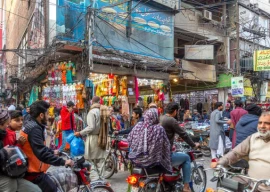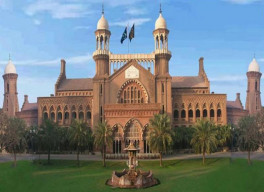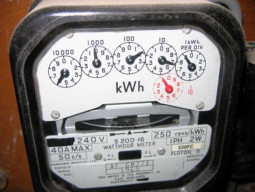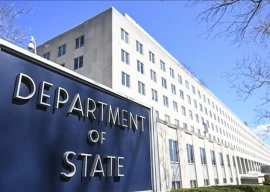
In a recent seminar on generation, transmission, distribution and regulation issues at NUST, presided over by the Federal Minister of Power, Mr Owais Leghari, several power sector experts gave vent to their views and pent-up concerns about the hydra headed nature of Pakistan’s power sector.
For laymen the power sector planning errors and the desultory management get reduced to two acerbic words i.e “electricity bills”.
The power cost has shot through the roof and compared to other countries in the region our electricity tariff has become uncompetitive with adverse impact on affordability as well as reliability of power supply.
The gist of the discourse yielded a mix of oft repeated some fresh conclusions.
The well-known conclusions included the macroeconomic imbalances, devaluation of currency, poor supply planning, weak demand management, lack of proper investment transmission infrastructure, dominance of imported fuel-based sources in national energy mix, unsustainable collection and distribution losses, and an inefficient single buyers’ market.
The interesting bit was the revelation that least cost methodology for the development of power supply in Indicative Generation Capacity Enhancement Plans (IGCEP) had been a least consideration in the past Another interesting conclusion was the fact that despite having the most uncompetitive tariff regionally, Pakistan still had the most economical energy rates in the overall tariff.
Compared to India’s 5 cents/unit average energy cost, Pakistan’s energy cost is 4 cents/unit.
The above means that there is nothing fundamentally wrong with Pakistan’s energy mix but it is other cost elements like high taxes, rapid devaluation of currency, and unsustainably high technical and collection losses that increase the tariffs to uncompetitive levels regionally and globally.
The above is corroborated by the figures given by the experts like Khalid Mansoor, who while analysing end consumer tariff’s constituent elements revealed that energy component only contributed 18%, while capacity payments and taxes including surcharges, contributed 31% and 32% respectively towards total consumer tariff.
On demand front it was a consensus that the impact of the capacity payments could be softened if the gap between the availability and utilization of power could be bridged.
Pakistan had installed 43400 MW based on very optimistic assumptions of industrial growth but unfortunately the industrialization could not take off as envisaged.
The result was that the productive load which caters to industrial demand was confined to 11000-12000 MW only. 60% of our energy demand in domestic sector can be addressed through improved building codes catering to environmental demands.
Our profligate energy supply is evidenced by the addition of a 3500 MW capacity catering to only 140 hours out of total 8760 hours in a year primarily for coolling load.
Demand management emerged as an interesting conclusion as addition of industrial demand and increase in EV demand through charging and battery swappable stations could be significantly enhanced. Demand creation also includes innovations like incentive rates of 8 cents/unit for winter months from October to December when the demand goes down.
Demand creation dilemmas would also arise in future due to our present solarization policies which are putting disproportionate burden on those who cannot afford rooftop solar systems.
In future when the affordable storage batteries become a technical reality the solar system owners might go off grid reducing the demand significantly.
The off-grid battery supported solar systems might result in beelines of applicants to DISCOs asking for disconnection. This surreal scenario might become a reality in next two years unless other low cost options are given to the price affected consumers.
The current national discourse is disproportionately focused on private IPPs and the capacity payments. The fact is that there is much more to the power sector than the capacity payments issue alone.
The disproportionate attention to generation side is probably on account of the fact that 80% of the tariff cost is contributed by generation side. Least cost generation source with less reliance on imported fuel, optimum demand creation, macro economic stability and proper linkage of sources with national grid are prerequisites for a sustainable reduction in generation cost.
The next important aspect after generation is the transmission system.
An inadequate and leaky transmission system would act as a retarder on the generation system inhibiting its full potential resulting in increased cost of generation due to capacity charges for the un evacuated power.
Due to inadequate transmission capacity the cheap power in South cannot be transferred to North. The cheaper local coal power plants that can provide electricity on economical rates giving an advantage of Rs 30 billion per month in winter months.
To remove constraints in transmission sector like construction of Rahimyar Khan Matiari 500 KV line, resolution of reactive power issues, and battery storage capacity for renewables based IPPs, an investment plan has been approved by NEPRA worth Rs 352 billion.
Unless a transmission capacity, commensurate to the supply, is created the demand management would also present insurmountable problems.
Innovative and technology enabled interventions to reduce losses and manage peak loads through peaking plant concept and use of smart grids are inescapable requirements in future. This concept relies on meeting peak demand through high cost yet readily available and quickly operable plants like gas turbine plants.
The peaking concept also resolves the dilemma of base load utilization in the future scenarios of availability of commercially viable cheap batteries which could enable consumers to go off grid, especially when 1200 MW solar capacity was being added annually.
According to a Bloomberg Report the installed solar capacity in Pakistan by the end of 2024 would be plus of 22.7 gigawatts by end of 2024, which is quite a contrast from the official figures of 0.6 gigawatts, projected to be 5.5 gigawatts by 2034.
A very interesting conclusion was the need for professionalization of unbundled WAPDA entries like NTDC and CPPA. These vital entities need to be staffed by sector experts and professionals instead of bureaucrats and generalists.
The minister assured the audience that the boards of these entities have now included the experts in the power sector with solid credentials.
A new National Transmission Company created to handle national transmission assets and future projects suitably structured to ensure that the equity flow into transmission system from global players is facilitated.
The privatization of DISCOs and creation of multiple buyers’ market as per Competitive Trading Bilateral Contract Model (CTBCM) is expected to resolve Pakistan’s power distribution woes.
The approval of “Independent System Market Operator” by Cabinet Committee on Energy is an indicator of the new model aimed at competition that could bring down the cost of power, a task existing government entity i.e CPPA cannot perform due to its limitations.
The present annual distribution losses of Rs 595 billion are simply unsustainable and the above reforms and privatization of DISCOs is a step in the right direction.
Some experts however sound a note of caution by advising that the privatization of the DISCOs should only be done after proper market reforms.
The unresolved issues like “Wheeling Agreement” need to be stitched up along with other reforms to ensure that the competitive market in distribution sector is not dogged with regulatory and bureaucratic hurdles.
The role of regulator has also come in for a stick for its failure to protect the interest of the consumers. NEPRA is accused of awarding exaggerated tariffs in the past to IPPs especially in case of upfront tariffs.
Front loaded tariffs were awarded at the rate of 8.5 cents to certain IPPs based on Thar coal whereas the investors themselves had shown inclination to accept a tariff of Rs 5.6/unit.
The capacity deficit of NEPRA emerged as an important conclusion and therefore the complete overhauling of NEPRA is the only way ahead to ensure meaningful oversight over privatized power sector.
The issue of high debt of mega hydel projects like Bhasha Dam and the impact on power tariff also emerged as an intriguing conclusion. While the value of the Bhasha Dam as a storage reservoir was amply illustrated. its contribution to the national tariff basket, and impact on average consumer tariff on account of high debt cost was viewed with trepidation.
The question of private hydel IPPs with higher tariff compared to the low tariff of mega dams developed by WAPDA also deserves a through scrutiny as the need for hydel IPPs with high tariff compared to low tariffed WAPDA projects needs to be explained in the interest of fairness and consumer interest.
The business model and performance of privatized KE also needs a facilitative oversight by the government. The use of Supervisory Control and Data Acquisition System (SCADA) and planning of self healing grids is an indication of dynamism of private sector that needs to be emulated by public sector as well.
The national power sector managers are hopeful of attaining a regionally competitive tariff in next 2-3 years because of the multiple reforms in generation, transmission, distribution and regulation spheres.
The caveat to above, however, was to avoid use of power plants with an energy cost component of more than 10 cents/Kwh. Any power plant with an energy component more than 10 cents/unit should be replaced by a cheaper alternative.
Finally, the governance and political economy issues that had bedevilled the power sector in the past need to be addressed in the interest of a sustainable reformation of the power sector.
Electricity grids on technical merit instead of political considerations, and the plugging of collection and T&D losses, alongwith zero tolerance for corruption and political patronage are de rigueur for success of power sector reforms.
There is hope as well as apprehension regarding the final results that would depend on the sincerity and resolve of the professional and political power elite of the country.
(The writer is a PhD from NUST and has been a member of the board of directors of three IPPs:rwjanj@hotmail.com)




1726222798-0/Tribune-Pic-(13)1726222798-0-165x106.webp)


















COMMENTS
Comments are moderated and generally will be posted if they are on-topic and not abusive.
For more information, please see our Comments FAQ